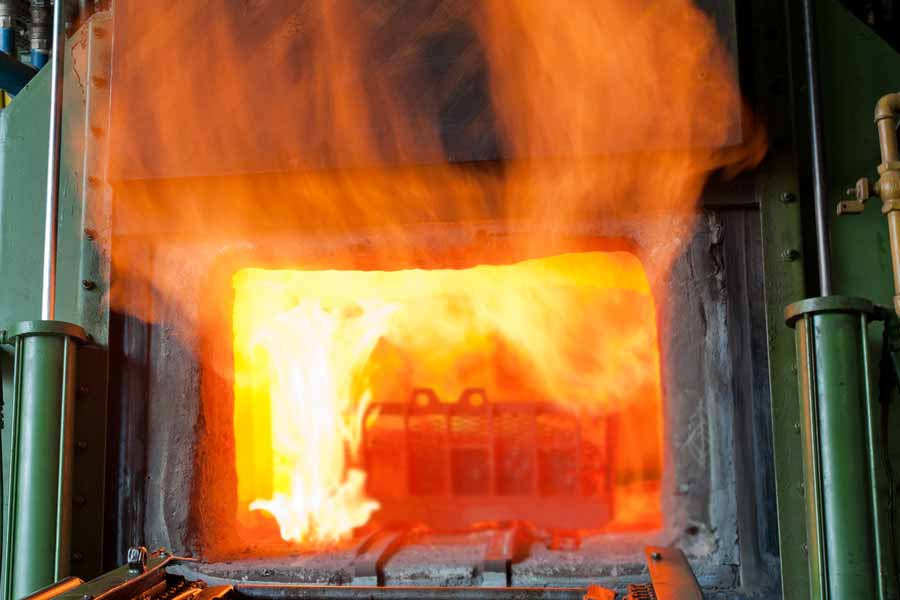
 Moble: +86 18122974730
Moble: +86 18122974730 Phone: +86 746 3386888
Phone: +86 746 3386888 Email: admin@cerampart.com
Email: admin@cerampart.com Skype: +86 18122974730
Skype: +86 18122974730 Wechat: +86 18122974730
Wechat: +86 18122974730Sintering is a very important process in the preparation of zirconia ceramics. The quality of sintering will directly affect the subsequent ceramic processing. Only when the sintering temperature is adjusted properly can its embryonic body be perfect.
Sintering is a very important process in the preparation of zirconia ceramics. The quality of sintering will directly affect the subsequent ceramic processing. Only when the sintering temperature is adjusted properly can its embryonic body be perfect.
Below we will introduce the main zirconia ceramic sintering process.
1.Electric field sintering of zirconia ceramics
The zirconia ceramic body is sintered under the action of a direct current electric field. Some ferroelectric ceramics with high Curie points, such as lithium niobate ceramics, apply a direct current field to the two ends of the body at the sintering temperature and wait to be cooled to the Curie point. (Te-1210℃) below the electric field, you can get zirconia ceramic parts with the piezoelectric property.

2.Ultra-high pressure sintering of zirconia
Ultra-high pressure sintering of zirconia is sintered at a pressure of hundreds of thousands of atmospheres or more. Its characteristic is that it can not only make the material quickly reach high density and have fine crystal grains (less than 1um), but also change the crystal structure and even the atomic and electronic state, thus giving the material something that cannot be achieved under the usual sintering or hot pressing sintering process Performance, can also synthesize new artificial minerals.
This process is more complicated and requires high requirements for mold materials, vacuum sealing technology, and the fineness and purity of raw materials.
3.Zirconia activation sintering
The principle is to use certain physical or chemical methods to make the atoms or molecules of the reactant in a high-energy state before or during the sintering process. Using the instability of this high-energy state, it is easy to release energy and become a Low-energy state, as a new process of enhanced sintering, is also called reaction sintering or enhanced sintering.
The physical methods used in activation sintering include electric field sintering, magnetic field sintering, sintering under the action of ultrasonic or radiation, etc. The chemical methods used include oxidation-reduction reactions, chemical reactions based on the dissociation of oxides, halides, and hydroxides, and atmosphere sintering. It has the advantages of lowering the sintering temperature, shortening the sintering time, and improving the sintering effect.
For some ceramic materials, it is an effective texturing technique. It can make use of substances in the phase change, dehydration and other decomposition processes, the bonding between atoms or ions is destroyed, making it in an unstable active state. For example, increase its specific surface area and increase surface defects, or add substances that can generate new molecules during the sintering process, or add substances that can promote the formation of solid solutions from sintered materials, or increase lattice defects. These methods are all activated sintering.
In addition, adding a small amount of substances that can form an active liquid phase can promote the vitrification of the material, appropriately reduce the viscosity of the liquid phase, wet the solid phase, promote solid phase dissolution and recrystallization, etc. These are also activated sintering.
4.Zirconia activated hot press sintering
People have developed a new process on the basis of activation sintering: hot pressing sintering. Hot-pressing treatment is carried out by using the activated state of the reactants with higher energy during decomposition reaction or phase change, which can obtain high-density ceramic materials at a lower temperature, lower pressure, and shorter time. It is a kind of high-efficiency hot pressing technology. For example, the decomposition reaction of hydroxide and oxide is used for hot pressing to make electronic ceramics such as barium titanate, lead zirconate titanate, and ferrite; the decomposition reaction of carbonate is used to hot press to make high-density beryllium oxide and thorium oxide And uranium oxide ceramics; use some materials to heat and press during phase change to make high-density alumina ceramics.
If this article is helpful, please follow us on Facebook and Linkedin, or browser more. Any requirements of ceramic parts OEM, feel free to contact us.
Ceramics quality Ceramics Process Ceramice after-sale Customer witness Patent Certificate
Ceramic Flange Ceramic BushingS Ceramic PlungerS Ceramic Pump ValveS